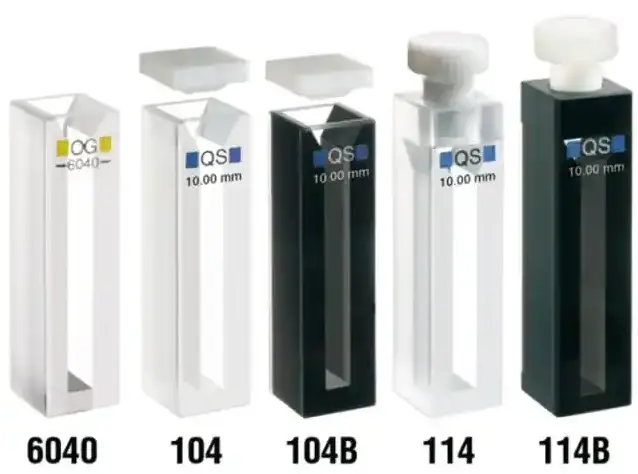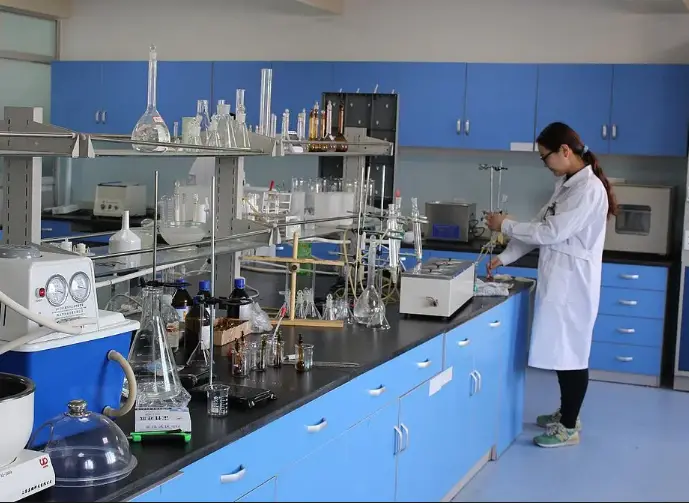Analytical chemistry plays a critical role in scientific research, underpinning the precise measurements essential for robust data analysis. It encompasses various scales of analysis, each tailored to specific types of chemical investigations. This article highlights two specific scales: micro analysis and semi micro analysis, which are pivotal in handling different quantities of chemical substances.
Micro analysis and semi micro analysis differ primarily in the amount of sample required for testing. Micro analysis typically involves quantities less than 10 milligrams, while semi micro analysis handles samples from 10 to 200 milligrams. This fundamental difference impacts the choice of equipment, sensitivity, accuracy, and cost involved in each method, providing essential guidance for researchers in choosing the appropriate analytical approach.
Both methods are integral to advancing chemical research, offering detailed insights into material composition and purity. They are used across various industries, including pharmaceuticals, environmental science, and materials engineering, where precise and accurate chemical analysis is paramount.

Core Concepts
Definition of Micro Analysis
Micro analysis in the realm of analytical chemistry refers to the quantitative and qualitative analysis of very small amounts of chemical substances, typically less than 10 milligrams. This scale of analysis is crucial when dealing with scarce materials or when only minute quantities are available for testing. The precision and equipment used for micro analysis are highly specialized, aiming to provide accurate data from these limited samples.
Definition of Semi Micro Analysis
Semi micro analysis, on the other hand, handles slightly larger amounts of substances, typically ranging from 10 to 200 milligrams. It serves as a bridge between micro analysis and macro analysis (which deals with larger quantities). Semi micro analysis is particularly valuable in academic settings, industrial applications, and environmental monitoring, where moderate amounts of samples are more commonly analyzed.
Key Differences
Sample Size Requirements
One of the most critical distinctions between micro and semi micro analysis is the sample size required. Micro analysis is characterized by the need for extremely small sample sizes:
- Less than 10 milligrams typically.
- Requires meticulous handling to avoid loss or contamination.
Semi micro analysis, while still requiring small samples, allows for slightly more generous amounts:
- Between 10 to 200 milligrams.
- More forgiving in terms of sample handling and preparation.
Equipment Used
The equipment necessary for each type of analysis also differs significantly due to the sample size and the sensitivity required:
- Micro analysis equipment includes ultra-micro balances, specialized micro pipettes, and advanced spectrometry instruments capable of detecting minute changes and concentrations.
- Semi micro analysis often utilizes standard laboratory equipment like analytical balances and standard lab glassware, which are less costly and more readily available.
Accuracy and Sensitivity
The accuracy and sensitivity of an analytical method are paramount, especially in chemical analysis:
- Micro analysis offers higher accuracy and sensitivity due to the sophisticated technology designed to handle and measure minuscule quantities accurately.
- Semi micro analysis, while still precise, does not usually reach the same levels of sensitivity as micro analysis, given its slightly larger sample sizes and less specialized equipment.
Cost and Accessibility
Cost and accessibility are also important factors:
- Micro analysis tends to be more expensive due to the high cost of specialized equipment and the need for highly trained personnel.
- Semi micro analysis is more accessible and cost-effective, making it suitable for a wider range of applications, including educational purposes and routine industrial testing.
Methodology
Techniques in Micro Analysis
Micro analysis involves several sophisticated techniques that require precise operation and careful sample preparation. Key techniques include:
- Electron Microscopy: Provides high-resolution images of the sample’s morphology and composition.
- Microscale Chromatography: Used for separating compounds in very small sample volumes.
- Capillary Electrophoresis: Allows for the analysis of sample components with high efficiency and resolution.
Techniques in Semi Micro Analysis
Semi micro analysis utilizes techniques that are adaptable to slightly larger sample sizes but still require careful handling:
- Spectrophotometry: Commonly used for semi micro analysis, allowing for the measurement of how much a chemical substance absorbs light, thereby determining its concentration.
- Titration Methods: Adapted for small volumes, these are used to determine the concentration of a solution by completing a chemical reaction with a known volume and concentration.
- Thermal Analysis: Techniques like TGA (Thermo Gravimetric Analysis) and DSC (Differential Scanning Calorimetry) can be scaled to small samples to measure changes in physical and chemical properties as a function of temperature.
Applications
Micro Analysis Uses
Micro analysis is essential in fields where only minute quantities of material are available for testing. Its applications are widespread and crucial in several key areas:
- Forensic Science: Identifies trace elements from crime scenes, crucial in criminal investigations.
- Pharmaceuticals: Ensures the purity and dosage of compounds in drug development.
- Material Science: Analyzes small-scale materials like nanoparticles and thin films.
Semi Micro Analysis Uses
Semi micro analysis is also versatile, suited to environments where small but not minute sample sizes are the norm:
- Environmental Monitoring: Tests water and soil samples for pollutants within a semi-micro range.
- Biochemical Analysis: Used in biochemistry labs for enzyme and protein assays.
- Educational Laboratories: Provides a practical approach for teaching chemical analysis techniques.
Advantages and Limitations
Advantages of Micro Analysis
The advantages of micro analysis are significant, especially in precision and material conservation:
- High Precision: Allows for extremely accurate measurements with minimal sample variance.
- Material Conservation: Ideal for expensive or rare substances where sample conservation is critical.
- Enhanced Sensitivity: Detects and analyzes compounds that are not observable with larger sample sizes.
Limitations of Micro Analysis
Despite its benefits, there are several limitations:
- High Cost: The cost of specialized equipment and training can be prohibitive.
- Technical Complexity: Requires highly skilled operators and meticulous preparation.
- Limited Application Scope: Not suitable for all types of samples or conditions due to size constraints.
Advantages of Semi Micro Analysis
Semi micro analysis offers its own set of advantages:
- Flexibility: Suitable for a wider range of samples than micro analysis.
- Cost-Effectiveness: Less expensive than micro analysis, making it accessible for routine lab use.
- Easier Handling: The slightly larger sample sizes reduce the risk of sample loss or contamination.
Limitations of Semi Micro Analysis
However, it also faces certain limitations:
- Reduced Sensitivity Compared to Micro Analysis: While still precise, it cannot match the sensitivity of micro-scale techniques.
- Resource Intensive: Requires more material than micro analysis, which can be a limitation when dealing with very scarce resources.
Choosing the Right Method
Factors to Consider
Selecting between micro and semi micro analysis involves several critical considerations:
- Sample Size: The amount of sample available can dictate the choice.
- Sensitivity Requirements: The required precision and detection limits of the analysis.
- Budget Constraints: Costs can vary widely between the two methods.
- Specific Application Needs: Depending on the specific application, one method may be more suitable than the other.
Case Studies
To illustrate how these factors come into play, consider the following real-world applications:
- Pharmaceutical Testing:
- Micro Analysis: Used for a new drug where only synthesized milligrams of the compound exist.
- Outcome: Successful identification and quantification of active ingredients.
- Environmental Testing:
- Semi Micro Analysis: Employed for monitoring metal contaminants in river water.
- Outcome: Effective measurement of pollutant levels, aiding in regulatory compliance and ecological assessments.
- Educational Purposes:
- Semi Micro Analysis: Integrated into university curricula to teach students analytical techniques on accessible equipment.
- Outcome: Enhanced learning experience, preparing students for industrial or higher research roles.
Frequently Asked Questions
What is Micro Analysis?
Micro analysis refers to a chemical quantification method where very small sample sizes, generally less than 10 milligrams, are analyzed. This technique is crucial in situations where sample availability is limited, and high precision is necessary.
What is Semi Micro Analysis?
Semi micro analysis is a form of chemical analysis that deals with sample sizes between 10 to 200 milligrams. It bridges the gap between micro analysis and macro analysis, offering a balance between minimal sample requirement and broader application.
How do Micro and Semi Micro Analysis Differ?
The primary difference lies in the sample size requirement. Micro analysis requires smaller samples than semi micro analysis, which affects the choice of analytical instruments and the overall sensitivity and accuracy of the results.
Where are Micro and Semi Micro Analysis Applied?
Micro analysis is often applied in forensic science, pharmaceuticals, and when dealing with rare or precious materials. Semi micro analysis is frequently used in academic research, environmental testing, and quality control in manufacturing.
Why Choose Micro Analysis Over Semi Micro Analysis?
The choice between micro and semi micro analysis depends on several factors, including the available sample size, the need for precision, cost considerations, and the specific requirements of the project or research.
Conclusion
Choosing between micro analysis and semi micro analysis depends on specific research needs, sample availability, and the precision required. Micro analysis is suited for extremely small samples where high accuracy is crucial, while semi micro analysis is applicable for slightly larger samples, offering a good balance of precision and usability.
Both methods enhance our ability to discern the subtlest compositions in materials, proving indispensable in scientific advancements and industrial applications. As technologies evolve, the precision and applicability of these analytical techniques will continue to expand, paving the way for more sophisticated and precise scientific inquiry.

